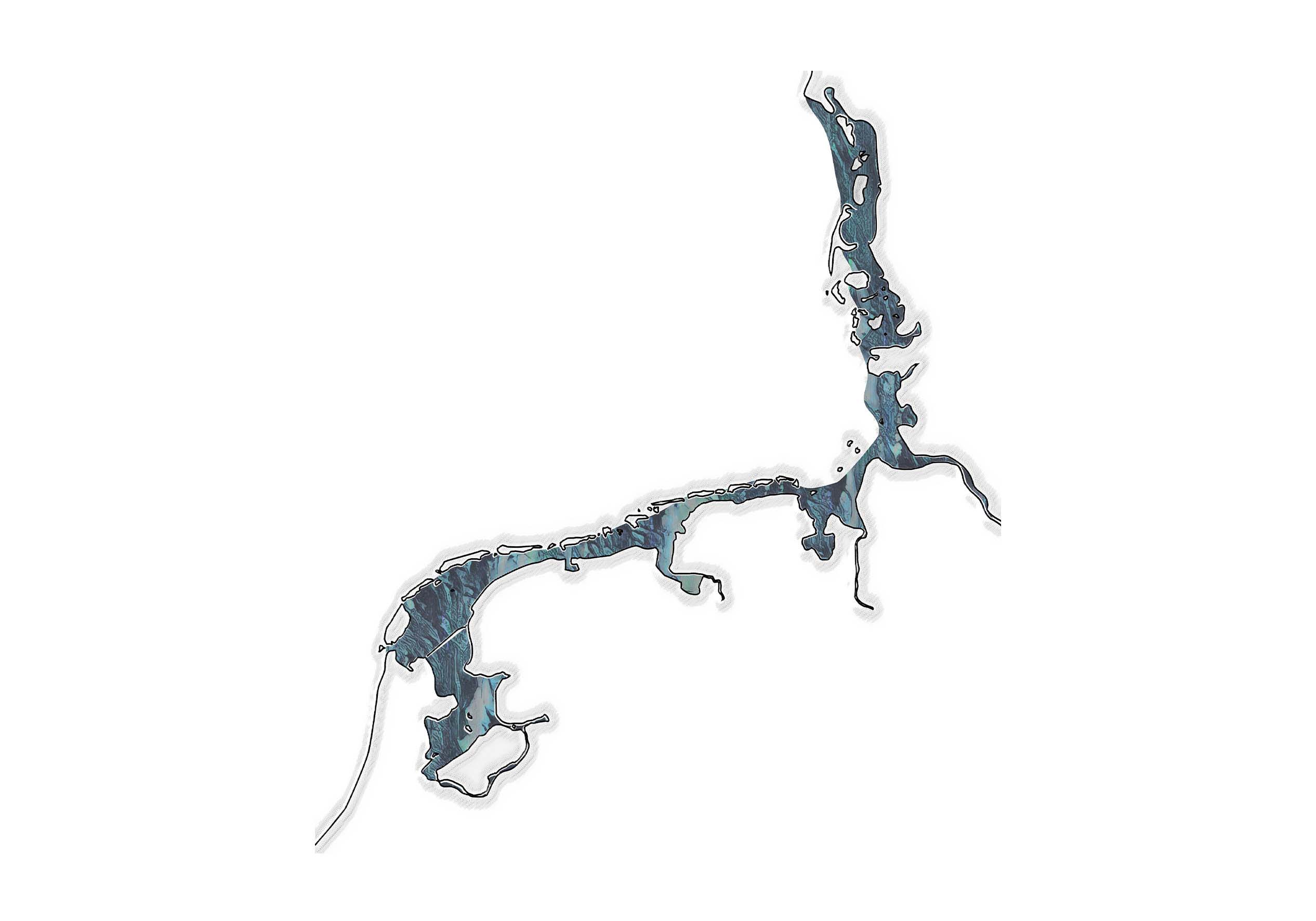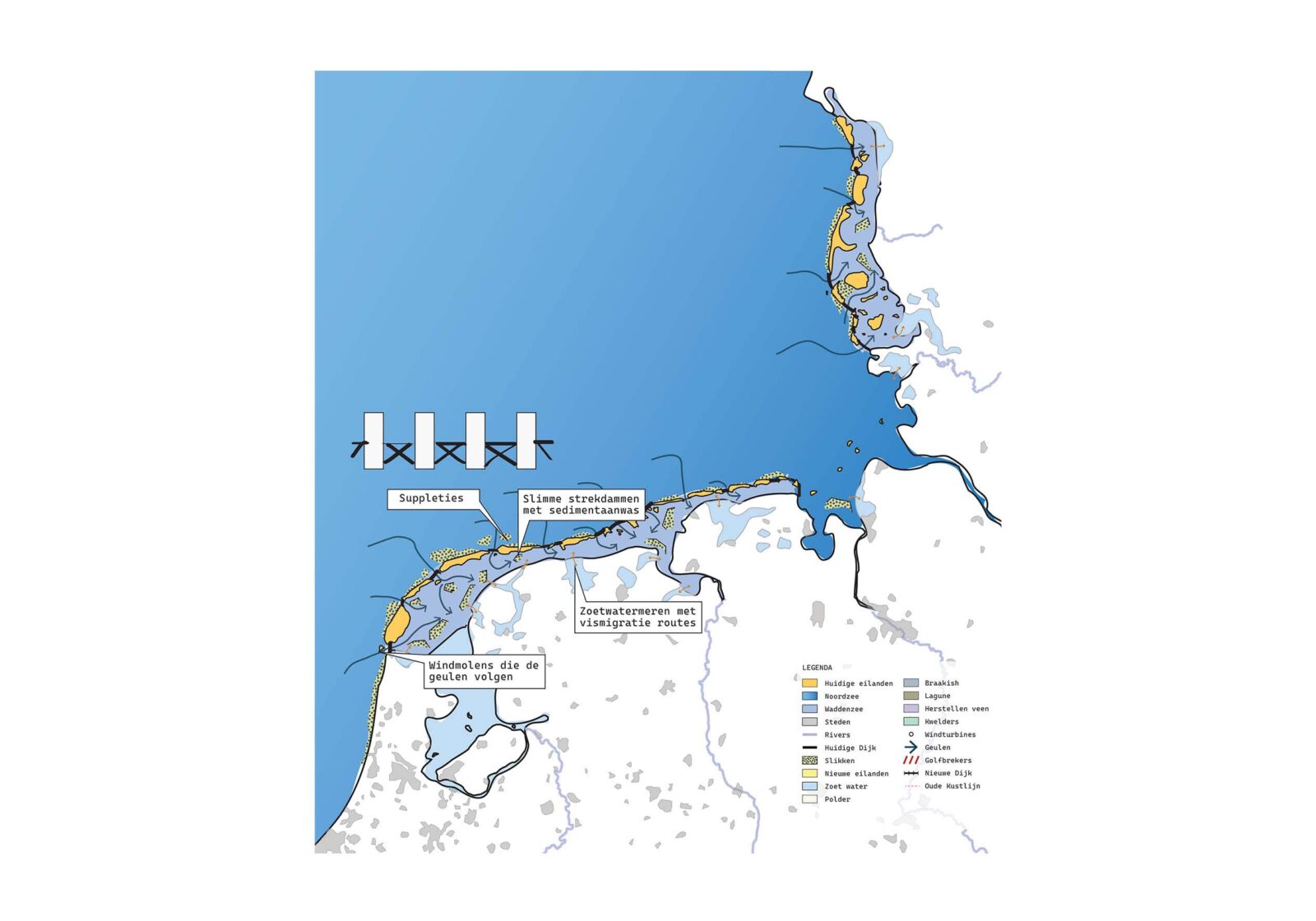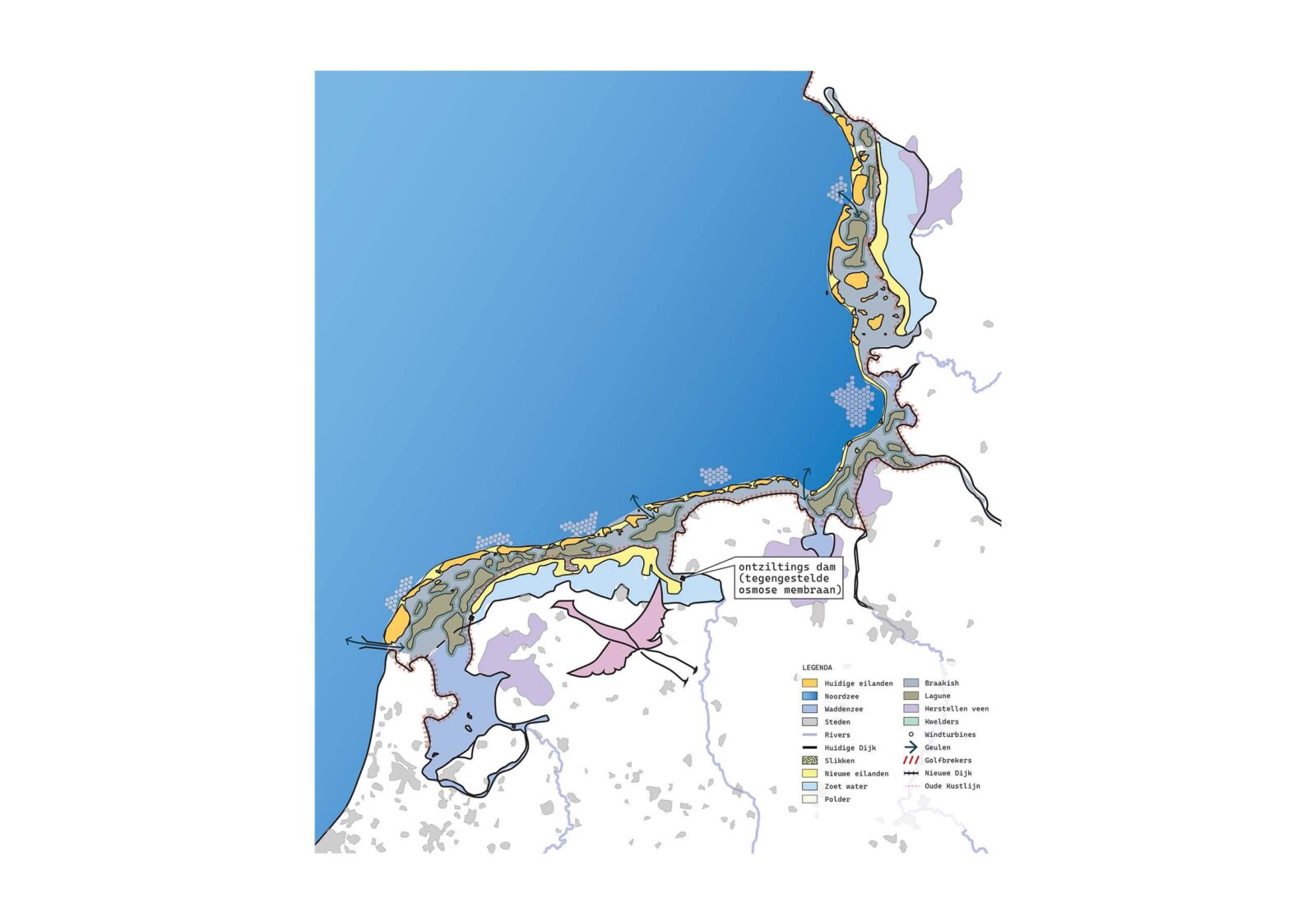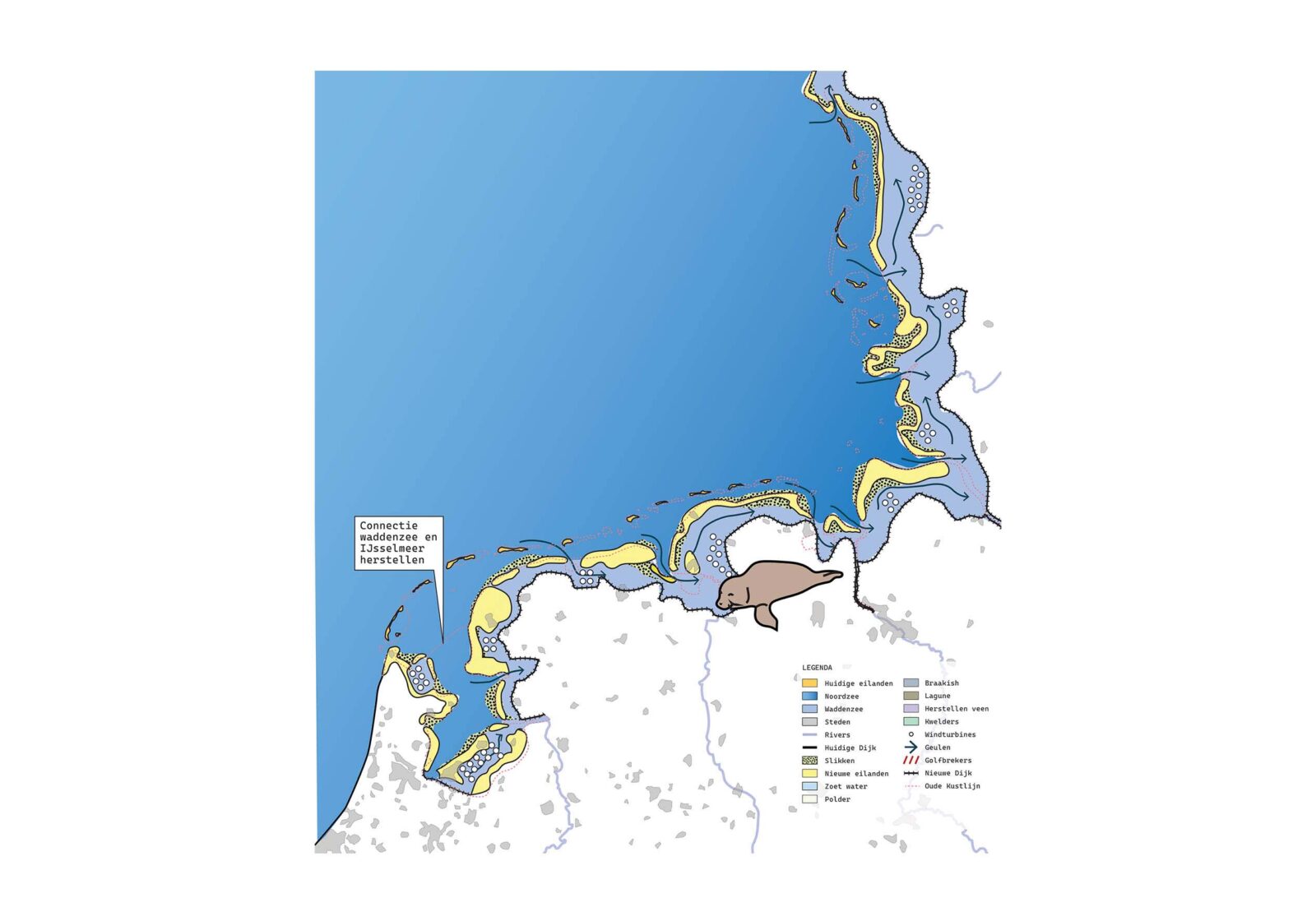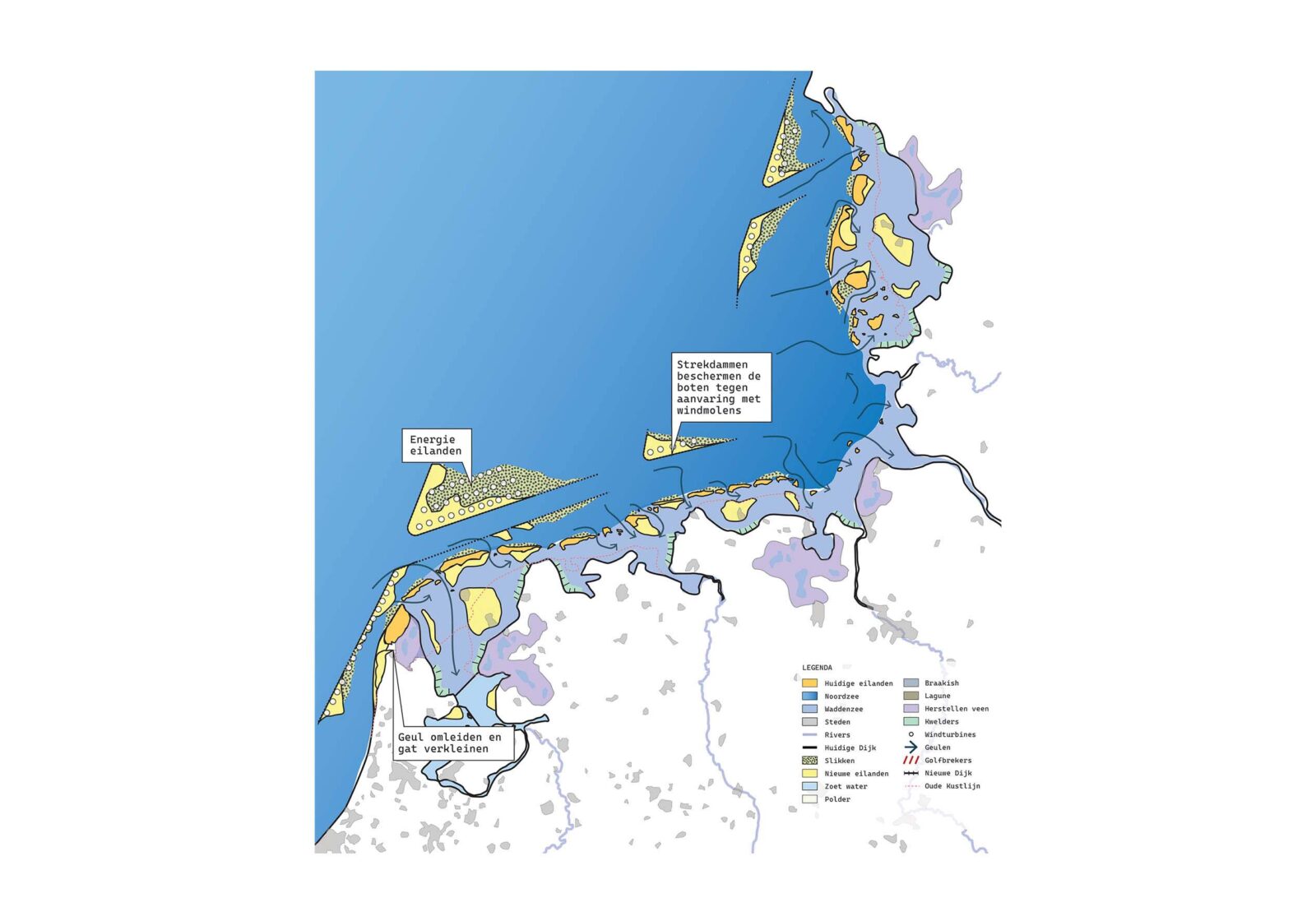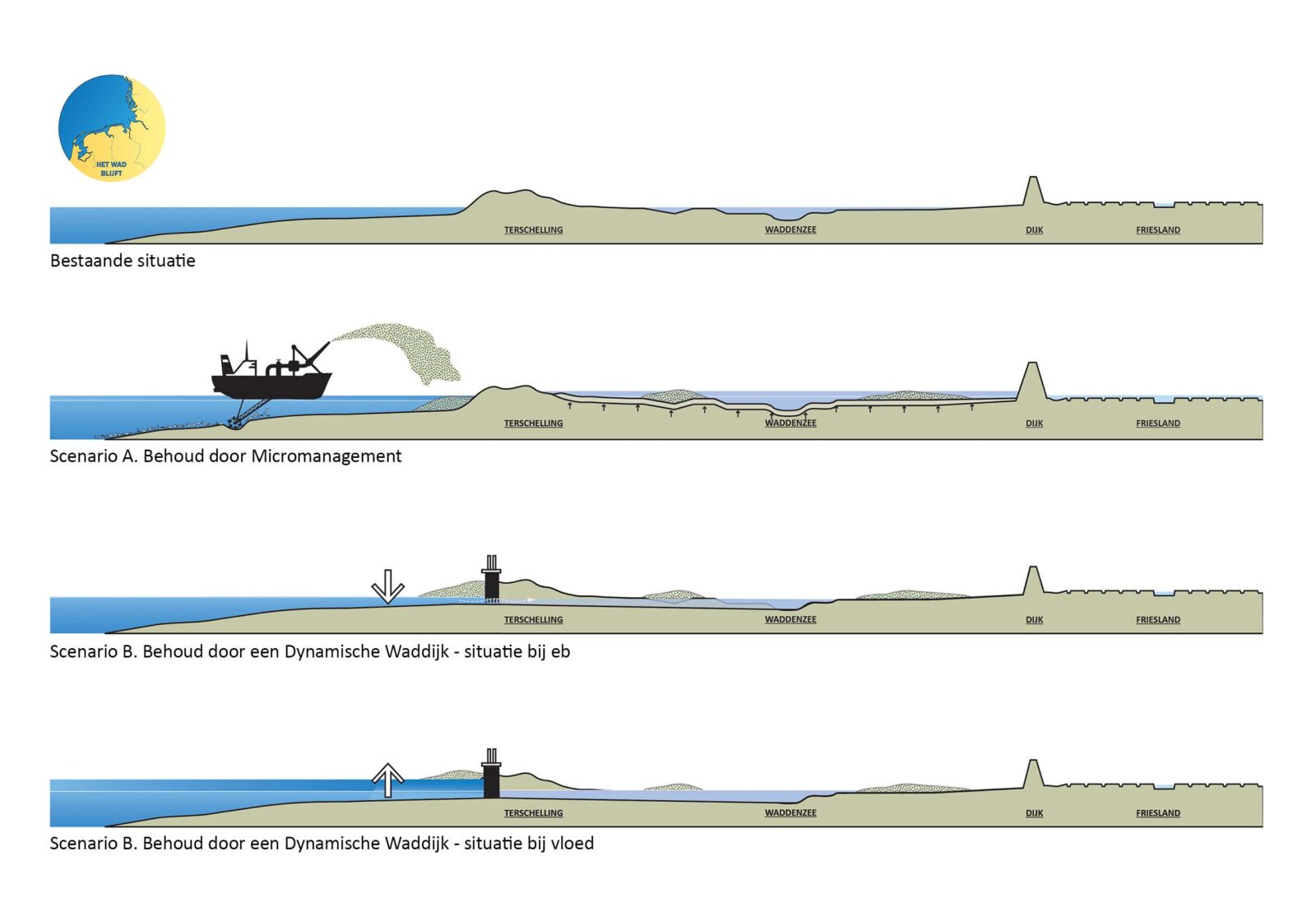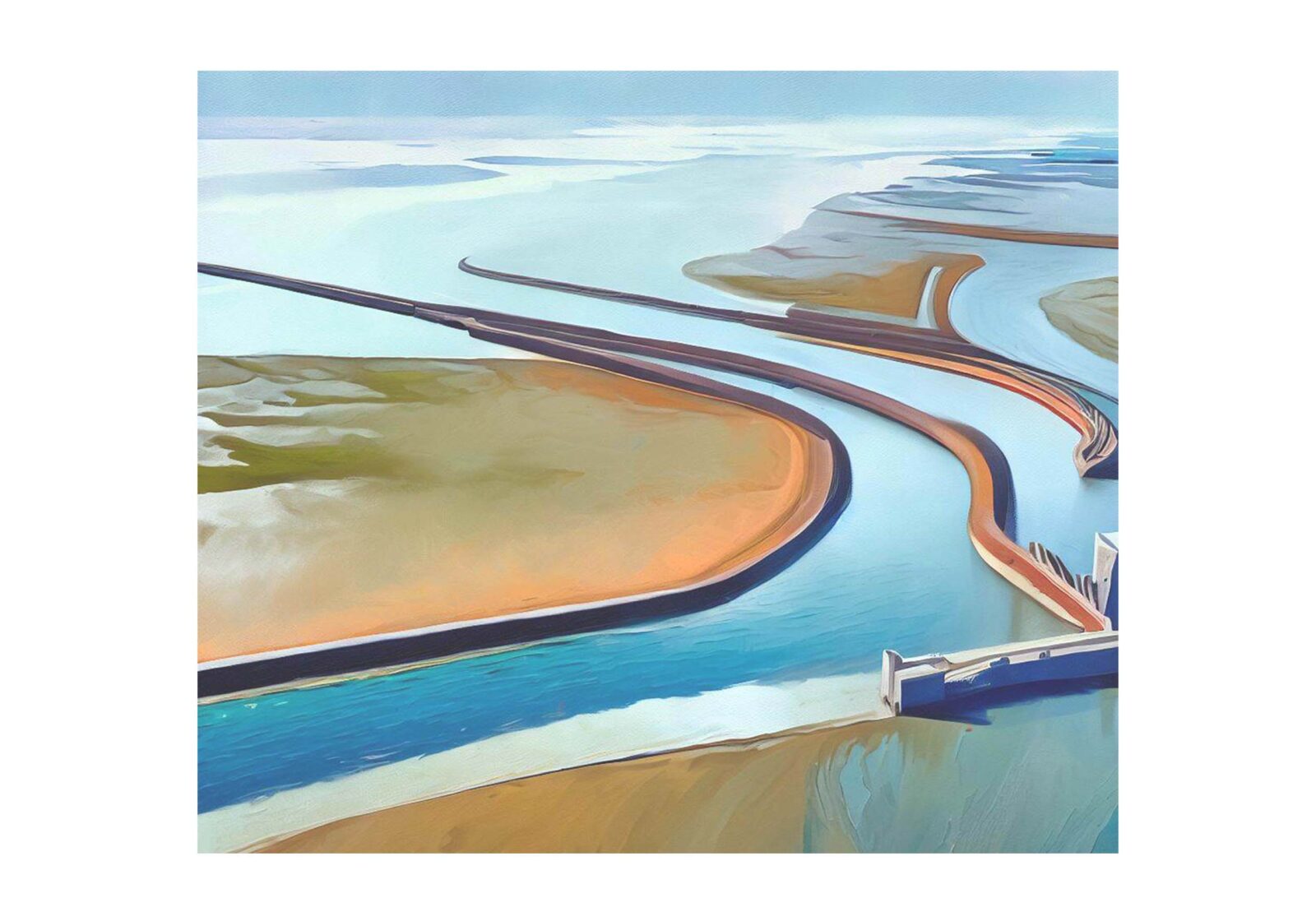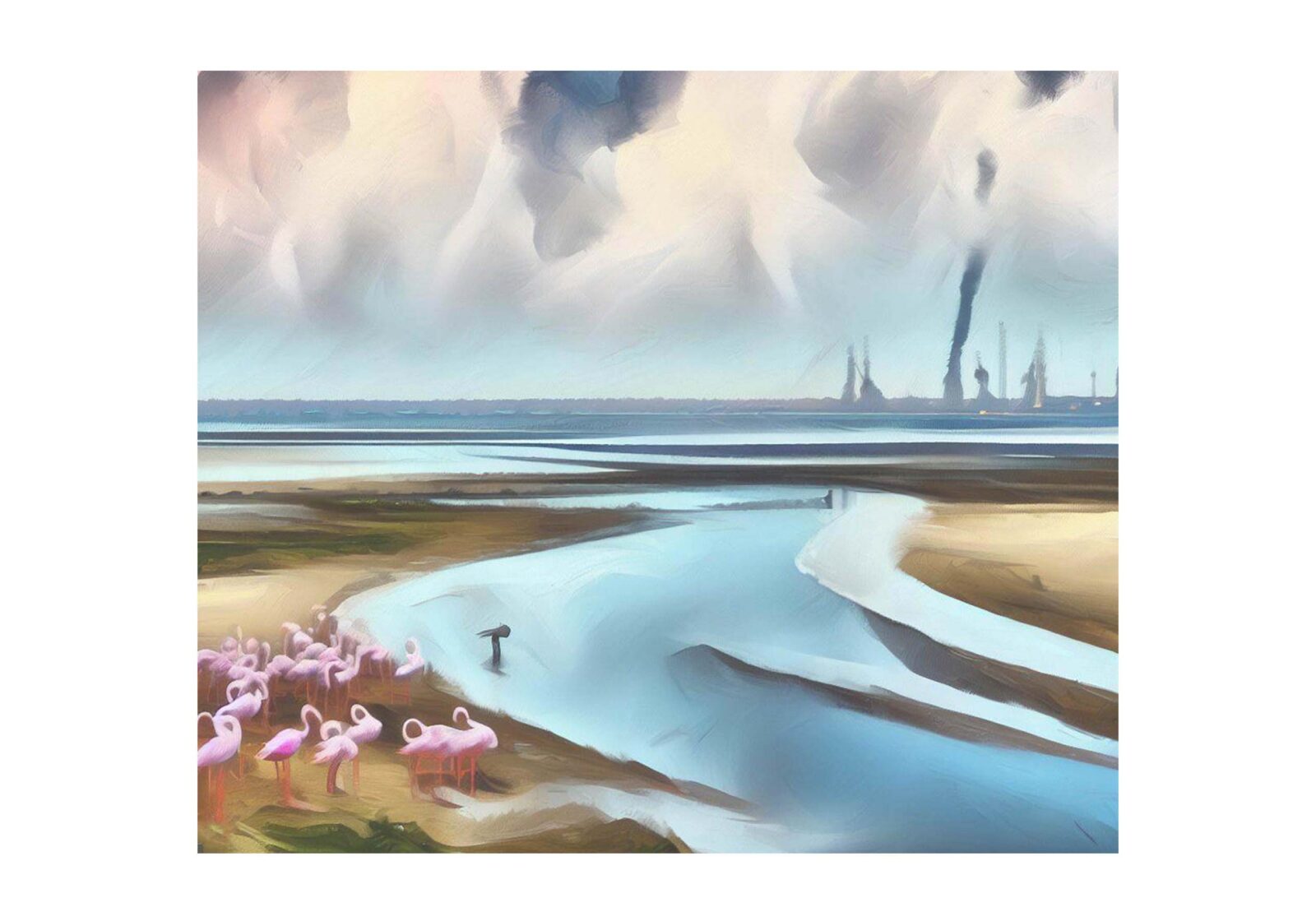Het Wad verdrinkt
Location
Wadden Sea, The Netherlands
Project type
Study
Year
2023
Client
-
Collaborators
-
Download free e-book (text in dutch): De Waddenzee verdrinkt - VE-R
The Wadden Sea is a unique area, and it is not without reason that it is a UNESCO World Heritage Site; a coastal zone with a shallow sea, where parts become dry at low tide. Special nature thrives in this dynamic environment. It is a habitat for seals, shellfish, fish and many bird species. Nesting grounds and resting place at the same time.
A lot of research is rightly being done into physical characteristics, flow models, sedimentation models, ecology and so on. The effects of climate change are also intensively researched. One of those effects is sea level rise. For 2300, the KNMI estimates between 2.3 and 5.4 m sea level rise for the highest emission scenario and between 0.6 and 1.1 m for the lowest scenario. Accelerated sea level rise may have major consequences for the Wadden Sea. In recent geological history, the Dutch coast appeared to be able to cope with sea level rise thanks to, among other things, natural sedimentation. But when the rate of sea level rise was higher than about 15 centimeters per century, the entire coastline, Wadden Sea and islands want to move inland, a so-called regression. But now that the diked hinterland does not move along in our current situation, sea level rise at that speed will have a different effect: The Wadden Sea is drowning!
Based on this principle, VE-R has developed four 'attitudes' with which we could relate to the future of the Wadden Sea. No ready-made plans, but starting points for a range of possibilities that are intended as an invitation to a broader debate; a first step in making potentially difficult choices that we as a country will have to make in the near future. The four attitudes are: 'The Wadden Sea remains', 'The Wadden Sea is disappearing', 'The Wadden Sea is shifting', and 'the Wadden Sea is growing'. From each of these four attitudes, several scenarios unfold that reflect the diversity in which one can think about the future of one of the most beautiful areas of our country. We would like to stimulate the debate a bit by also giving a place to the more radical schools of thought, but of course it is not yet possible to draw a conclusion about where we should, want or can go.
In our opinion, this exploration shows that it is worthwhile to start now with integrated studies on the opportunities and obstacles for the future of the Wadden Sea. We don't think we can wait for that. Given the complexity of the interweaving of natural and human systems and processes and the multitude of themes that affect the Wadden system, it seems wise to take the time to study, debate and then go back to the drawing board, in order to always take one step further in insights, thinking and exchange of ideas; And to prevent us from being forced into radical interventions in the future or from seeing the mudflats slowly disappear before our eyes.

